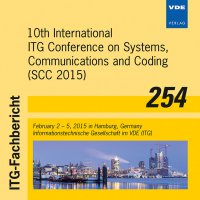Power Saving Potential of Cooperative Communication: A Two-Dimensional Approach
Conference: SCC 2015 - 10th International ITG Conference on Systems, Communications and Coding
02/02/2015 - 02/05/2015 at Hamburg, Germany
Proceedings: SCC 2015
Pages: 6Language: englishTyp: PDF
Personal VDE Members are entitled to a 10% discount on this title
Authors:
Korn, Clemens; Michalopoulos, Diomidis S.; Schober, Robert (Institute for Digital Communications, University of Erlangen-Nuremberg, Germany)
Abstract:
We assess the power saving potential of cooperative communication for a two-dimensional user distribution scenario. In particular, we compare the average total transmit power of cooperative transmission (i.e., the sum of the user and the relay transmit power, averaged over the distribution of the users) with the average transmit power of conventional (direct) communication. The comparison is performed on the basis of achieving the same signal-to-noise ratio (SNR) at the base station in both cases. In this regard, a circular shaped radio cell with circularly uniformly distributed users is considered. A theoretical investigation of the savings in transmit power offered by cooperation is conducted for the case where the path-loss exponent equals four. The theoretical analysis is verified by simulations, which also consider a wider range of path loss exponent values for the evaluation of the power savings achieved by cooperation. Our results demonstrate that the power savings per user increase with increasing path loss exponent and with increasing number of users within the circular cell.


